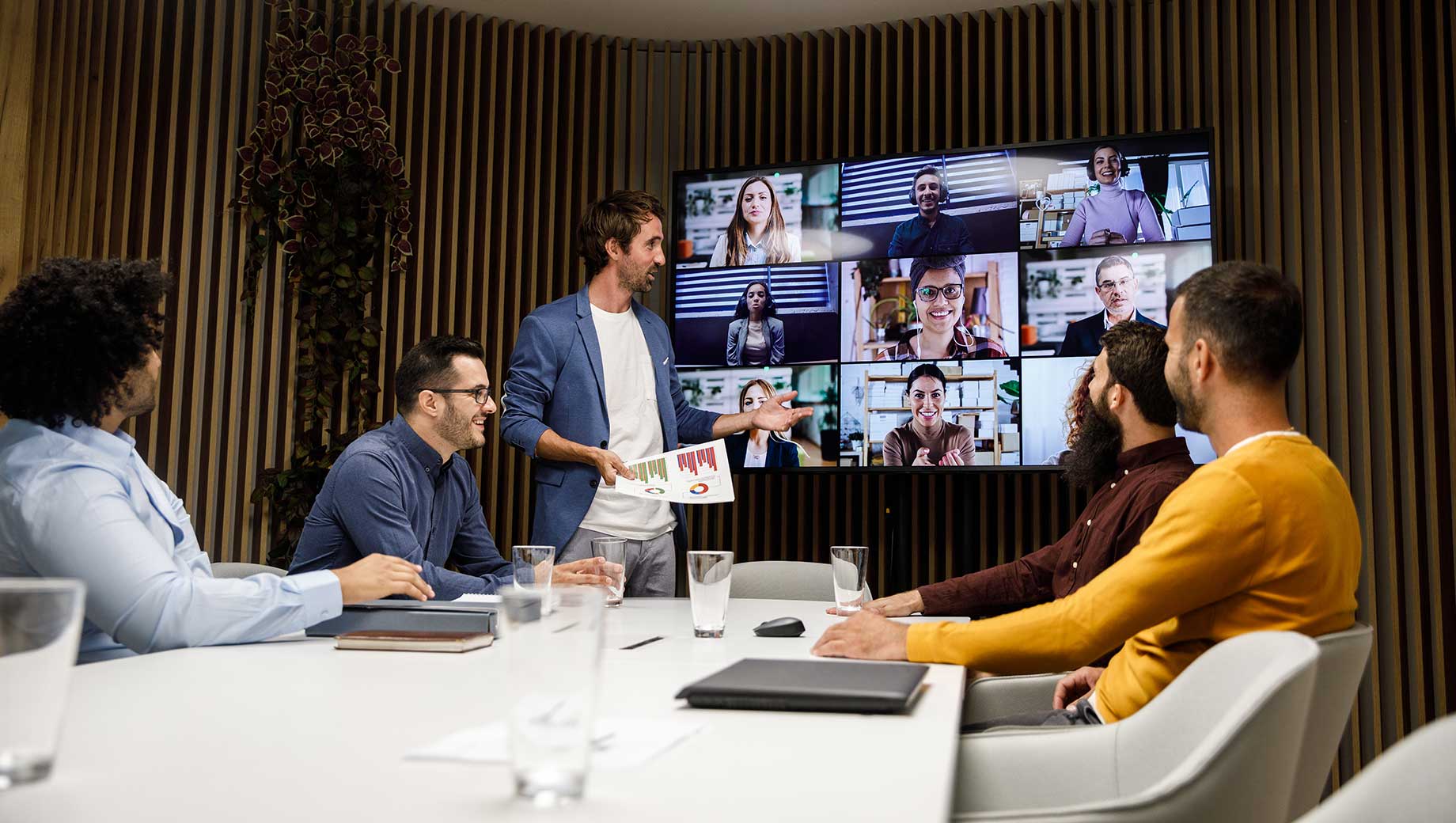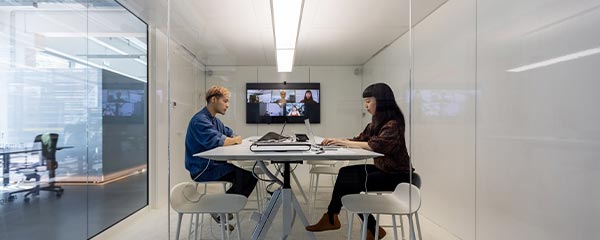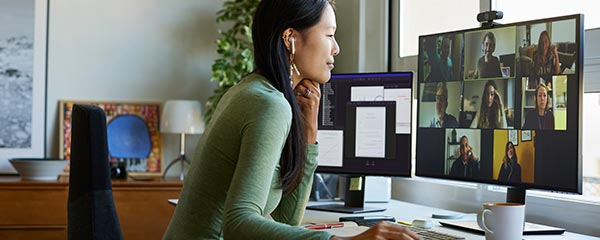Story Highlights
- Virtual collaboration is less effective than in-person time
- Two to three office days boost outcomes for engagement and wellbeing
- Maximize engagement by establishing standard onsite office days
The following is adapted from Culture Shock, Gallup’s new book about the biggest leadership challenge of our time. For more insights, order your copy of Culture Shock today.
As companies increasingly embrace remote and hybrid work arrangements, many leaders are wondering: Is in-person time in the office with colleagues still valuable? And did it ever matter as much as we thought it did?
Human development suggests in-person interactions have always been important.
Anthropologists contend that human brain size grew over time to enable greater computational power to keep up with -- and expand -- meaningful social interconnections. Social influence gave humans greater capacity for collaborative work, trading for food and resources, hunting larger game, and protection from predators.
Even in hybrid and remote work environments, humans still rely on our social bonds to get work done. Mandated social distancing and a shift to Zoom didn't change that one bit. About three in 10 workers globally report having a best friend at work -- many well-run organizations have doubled the global average.
A Gallup meta-analysis of more than 100,000 business units found that the units with more bonded workers achieve higher performance and lower turnover.
Why Virtual Meetings Are Less Effective
Nearly all of history included social interactions that were first-hand, in-person relationships. The digital virtual world of the past few decades is new to our brains. To what extent can we replicate a satisfying and bonding social experience through technology?
Even in hybrid and remote work environments, humans still rely on our social bonds to get work done. Mandated social distancing and a shift to Zoom didn't change that one bit.
Years before the pandemic, Gallup conducted an in-depth study of how people’s use of social time affects their daily mood. We studied 17,719 Gallup Panel members who were asked to reconstruct their previous day -- morning, afternoon and evening -- and tell us how much social time they spent (and in what form) and how they felt.
Gallup found that nearly all forms of social time boosted mood, but social time through technology had thresholds -- mood dropped after about 25% of time spent socializing via technology. In-person social time had the largest impact on mood -- but the total amount of time mattered less than the event itself. Exercising or eating/drinking together showed the strongest impact on mood. Videoconferencing had a weaker relationship to mood.
Thirty-two percent of hybrid employees indicate that virtual meetings are less effective than in-person meetings compared with 17% who say virtual meetings are more effective. More than half (51%) say there was no difference.
Other published work sheds some light on the different effects of virtual and in-person experiences. From our first interactions when we are born, we communicate through nonverbal cues in synchrony with others. In-person communication blends the timing of our gestures, words and movements. In videoconferences, we are trying to replicate that synchrony -- whether consciously or not -- which is impossible. Seeing someone on screen is certainly better than not seeing them. However, we don’t know when someone is multitasking and not giving their full attention.
In-person interactions stimulate chemical reactions -- the release of neurotransmitters such as dopamine and the hormone oxytocin reinforces the reward centers in our brains. These chemical responses and face-to-face social signals speed up our ability to convey empathy, trust and humor.
Dr. Jeremy Bailenson, professor and founding director at Stanford University’s Virtual Human Interaction Lab, has highlighted several theories for why videoconferencing is less effective than being in person, including unnatural eye gaze, cognitive load, looking at an all-day mirror of ourselves and greatly restricted mobility. He suggests these forms of nonverbal overload are contributing factors to “Zoom fatigue.”
Another experiment reinforces Bailenson’s results. It found that bonding between pairs of people was greatest during in-person interaction, followed by video chat, audio chat and instant messaging -- in that order. But the authors also found that pairs of people who used video chat more often reported greater bonding. When pairs of people agree on the medium of choice, bonding is potentially greater.
Thirty-two percent of hybrid employees indicate that virtual meetings are less effective than in-person meetings compared with 17% who say virtual meetings are more effective.
A recent study published in the journal Nature Human Behaviour found that collaborative idea generation and creativity were lessened when random pairs of people worked together virtually when compared with random pairs working together in person. Another study reported that the shift to working from home corresponded with an increase in meetings and more time required to complete the same amount of work.
While technology saved us during the pandemic, it may have also slowed us down and separated us. Will this lead to a gradual deterioration in organizational culture? It has already begun.
The Right Mix of Remote and In-Person Collaboration
So, what blend of remote and in-person collaboration ensures high productivity and creativity, strong social bonds, and a durable organizational culture?
In a June 2022 study of more than 16,000 U.S. full-time employees, Gallup examined various combinations of independent and collaborative working requirements. We aimed to discover the amount of office versus remote time that maximized employee engagement and wellbeing and reduced burnout and the likelihood of employees looking for a new job.
Nearly nine in 10 (88%) of those in remote-ready jobs report to Gallup that they have a mix of independent and collaborative work; 61% say they perform their tasks independently and then bring their work to the team for collaboration. Perhaps this was one of the big “Aha!” moments of the pandemic: Workers realized that they could accomplish a lot of their work without being in the office every day.
We then looked at employees in jobs that require some collaboration and asked them how many days they were currently working at home and in the office. And we learned that two to three days in the office resulted in the best outcomes for employee engagement and wellbeing and reduced job hunting and burnout. There was no discernable pattern for which days in the office led to positive outcomes, although people tend to favor going to the office on Tuesday, Wednesday and Thursday.
Outcomes were worse for those working all five days on-site -- even after controlling for variation in job type. The full-time on-site employees were no more likely to say they feel as though they are part of their organization’s culture. While the number of days in the office matters, other factors matter substantially more.
Advice for Leaders
- Commit to hybrid work for remote-ready employees. Do this, or you risk employee engagement -- and your ability to retain and attract highly talented employees.
- Establish standard on-site office days -- for example, Tuesday, Wednesday and Thursday. Two to three on-site days maximize employee engagement. Do not make it a requirement or policy. Announce it as your new way of working. It is a promise employees make to each other, not a promise to management. Employees need to know which days they are together in person for the highest collaboration and innovation. Local managers should spearhead this by considering each employee’s work, workstyle, individual situation, collaboration with colleagues and, importantly, value they bring to customers.
- Upskill your managers to hold one meaningful conversation per week with each employee -- 15 to 30 minutes long -- about goals, customers, wellbeing and recognition. Gallup has found that managers can be upskilled quickly, resulting in higher employee engagement of their teams and increased employee retention in a hybrid environment.
Make engagement a priority, regardless of where your employees are working.
- Check out Culture Shock, Gallup’s solution to the biggest leadership problem of our time.
- Read more about getting the most out of hybrid and remote teams.
- Track U.S. employees’ experiences with hybrid and remote work.




